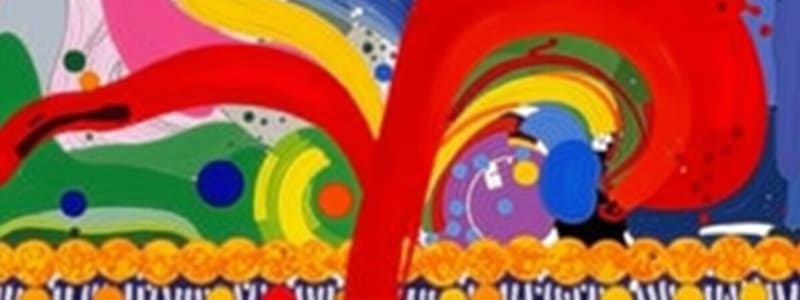Podcast
Questions and Answers
What is the immediate consequence of ATP hydrolysis during active transport?
What is the immediate consequence of ATP hydrolysis during active transport?
- The protein pump binds to the molecule being transported.
- The protein pump releases the transported molecule on the other side of the membrane.
- The protein pump reverts to its original shape.
- The protein pump changes shape. (correct)
Which of the following accurately describes the direction of movement of substances during active transport?
Which of the following accurately describes the direction of movement of substances during active transport?
- From an area of high concentration to an area of low concentration, using ATP.
- From an area of low concentration to an area of high concentration, without the need for energy.
- From an area of low concentration to an area of high concentration, using ATP. (correct)
- From an area of high concentration to an area of low concentration, without the need for energy.
What causes the protein pump to revert to its original shape after the transport of molecules or ions across the membrane?
What causes the protein pump to revert to its original shape after the transport of molecules or ions across the membrane?
- The binding of ATP to the protein pump.
- The release of the transported molecule or ion.
- The release of Pi (inorganic phosphate) from the protein pump. (correct)
- The binding of ADP to the protein pump.
A scientist is studying a cell that struggles to import glucose from a low-concentration environment. Which cellular process is most likely impaired?
A scientist is studying a cell that struggles to import glucose from a low-concentration environment. Which cellular process is most likely impaired?
Which of the following is NOT a characteristic of active transport?
Which of the following is NOT a characteristic of active transport?
Flashcards
Active Transport
Active Transport
Movement of particles from low to high concentration against a gradient using ATP energy.
Protein Pumps
Protein Pumps
Specific proteins that facilitate active transport across the membrane using energy.
ATP and Hydrolysis
ATP and Hydrolysis
ATP provides energy for active transport by breaking down into ADP and phosphate.
Movement Mechanism
Movement Mechanism
Signup and view all the flashcards
Inorganic Phosphate (Pi)
Inorganic Phosphate (Pi)
Signup and view all the flashcards
Study Notes
Active Transport Definition
- Active transport moves particles from low to high concentration.
- It goes against the concentration gradient.
- It requires energy from ATP hydrolysis.
- It uses specific protein pumps.
- It occurs across a semi-permeable membrane.
Active Transport Mechanism (Diagram Notes)
- Diagram 1: Molecules or ions collide with, and bind to, a specific protein pump in the membrane.
- Diagram 2: ATP activates the protein pump. The pump changes shape using energy released during the hydrolysis of ATP.
- Diagram 3: The molecule or ion being transported is released on the other side of the membrane.
- Diagram 4: Inorganic phosphate (Pi) is released from the protein pump, which causes it to revert to its original shape, preparing it to receive another particle. ADP is also released.
Studying That Suits You
Use AI to generate personalized quizzes and flashcards to suit your learning preferences.




